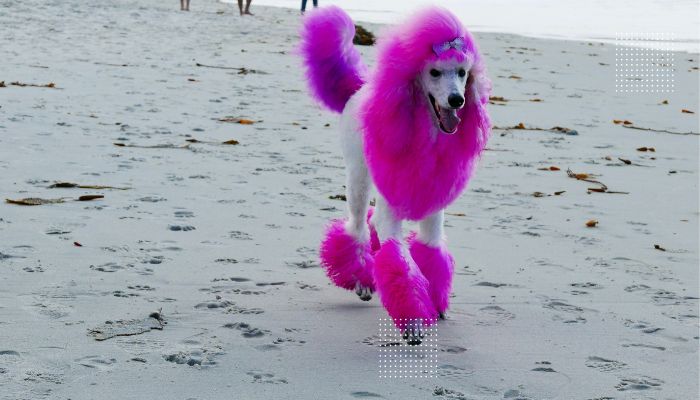
Have you ever heard of pink poodles? These fluffy, pastel-colored canines may seem like a whimsical and unrealistic concept, but they do in fact exist. With their unique history and physical characteristics, pink poodles have gained a reputation as both a fashionable and controversial breed. In this article, we will explore the reality of pink poodles, from their origins to the ethical concerns surrounding their breeding and ownership.
Despite their unconventional appearance, pink poodles are more than just a novelty – they are living, breathing animals with their own unique traits and personalities. So, are pink poodles real? The answer may surprise you.
The history of pink poodles
The history of pink poodles can be traced back to the early breeding practices of standard poodles. Standard poodles, also known as “grand poodles,” are the largest of the poodle breeds and were originally bred as hunting dogs in Germany. They gained popularity in France, where they were used as water retrievers and eventually became known as the national dog of France.
Over time, poodles became popular as pets and show dogs, and breeders began experimenting with different colors and patterns in their coat.
The rise of pink as a popular color for poodles can be attributed to a combination of fashion trends and technological advances in dyeing techniques. In the 1960s and 1970s, pink was a trendy and fashionable color, and poodle breeders began producing pink poodles as a result.
With the development of more advanced dyeing techniques, it became easier to produce pink poodles with a consistent and even color.
As the popularity of pink poodles grew, a new breed of poodle specifically bred for their pink color began to emerge. These pink poodle breeds were developed through selective breeding, with the goal of producing puppies with a consistent shade of pink in their coat. Today, pink poodles are a recognized breed by some kennel clubs, although they are not recognized by all.
The characteristics of pink poodles
Physical appearance and size: Pink poodles can come in various sizes, depending on the breed they belong to. Standard pink poodles, also known as “grand poodles,” are the largest of the poodle breeds and can reach up to 70 pounds in weight and over two feet in height.
Miniature pink poodles are smaller, usually weighing between six and nine pounds, and toy pink poodles are the smallest, weighing between four and six pounds. Pink poodles have a distinctive appearance, with a curly, fluffy coat that ranges in color from pale pink to hot pink, depending on the individual dog.
Personality traits: Pink poodles are known for their intelligence and playfulness. They are generally friendly and outgoing, and are known to be good with children and other pets. Pink poodles are also highly trainable and excel in obedience and agility training. Like all poodles, they have a strong desire to please their owners and can be very loyal.
Health concerns: Pink poodles, like all poodles, are generally healthy breeds with a lifespan of around 12-15 years.
However, like all breeds, they can be prone to certain health issues such as hip dysplasia, skin allergies, and eye problems. It is important for pink poodle owners to be aware of these potential health concerns and to work with a veterinarian to ensure that their dog receives proper preventive care.
The controversy surrounding pink poodles
The controversy surrounding pink poodles centers around the ethical concerns surrounding their breeding and ownership. One of the main ethical concerns is the idea of breeding for specific colors or traits.
Some critics argue that this practice can lead to inbreeding and the proliferation of genetic disorders. In addition, there is a risk that breeders may prioritize the production of exotic or unusual colors over the health and well-being of the dogs.
Another ethical concern is the potential for exploitation and inbreeding. There have been instances of unscrupulous breeders producing pink poodles in inhumane conditions and selling them to unsuspecting buyers at high prices. In addition, the demand for pink poodles can encourage irresponsible breeding practices, leading to the overproduction of puppies and contributing to the problem of pet overpopulation.
Conclusion
Overall, it is important for potential pink poodle owners to carefully consider the ethical implications of buying and owning an exotic breed. It is important to do thorough research on breeders and to ensure that the dog is being raised in a responsible and humane manner.


